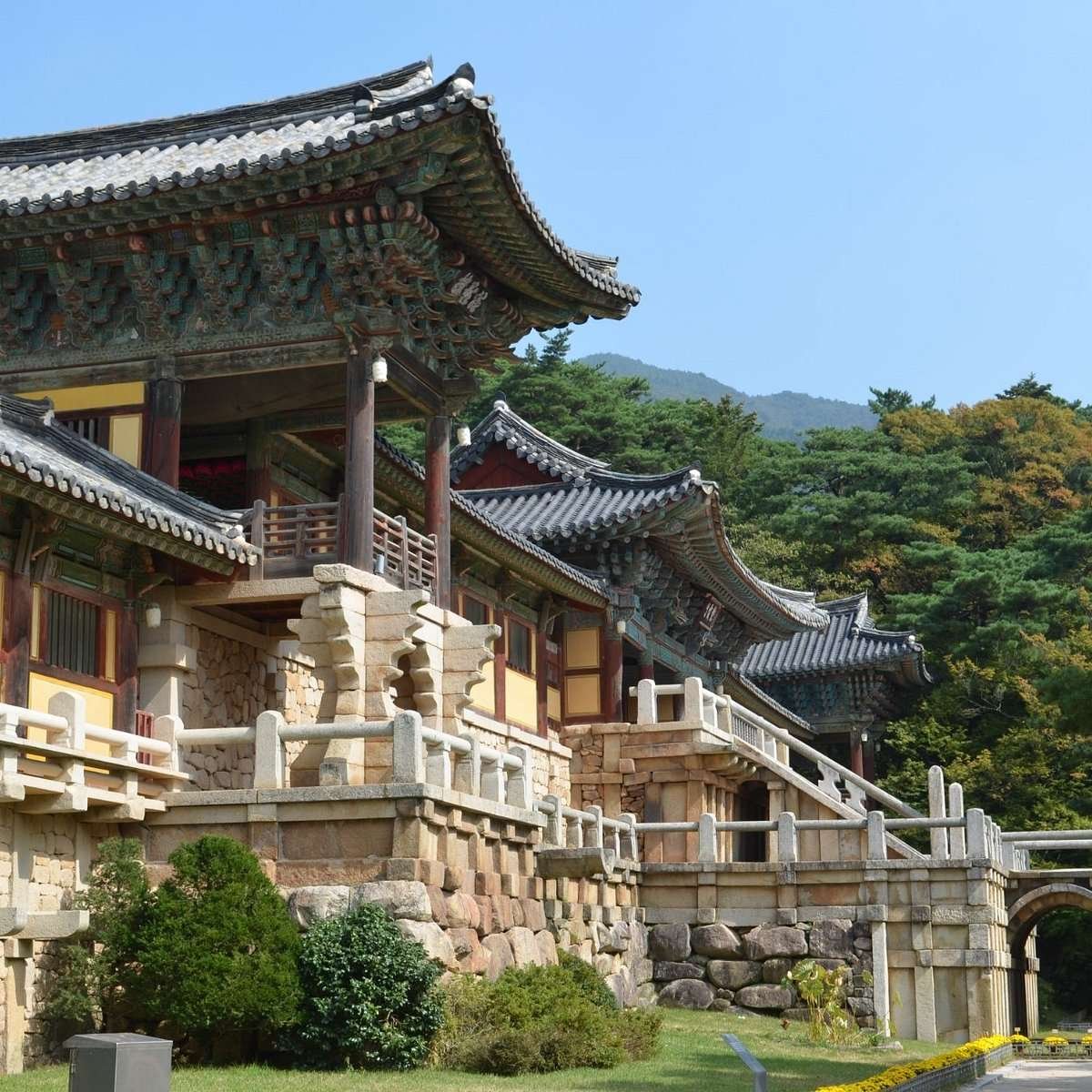Cultural tourism Asia

Tourism Sites

Bulguksa Temple
🧠 Fact: A UNESCO World Heritage Site and Korea’s most famous Buddhist temple, originally built in 528 AD.
💡 Tip: Visit early morning for peaceful views and to avoid tour groups.
Info: Bulguksa, perched on Mount Tohamsan in Gyeongju, is a 6th‑century Buddhist temple rebuilt in the 8th century under Prime Minister Kim Dae‑seong and designated a UNESCO World Heritage site in 1995
tripadvisor.com
+14
en.wikipedia.org
+14
whc.unesco.org
+14
. This sprawling complex features remarkable stone terraces, iconic bridges—Cheongun‑gyo and Baegun‑gyo—and twin stone pagodas: ornate Dabotap and simple Seokgatap, both national treasures
en.wikipedia.org
+13
en.m.wikipedia.org
+13
aroundtheworld4u.com
+13
. Its wooden halls—Daeungjeon, Gwaneumjeon, and Birojeon—house gilt‑bronze Buddhas. The temple exemplifies Silla’s golden age of Buddhist art, blending architectural harmony with spiritual symbolism across its three sacred zones
- 📍 Gyeongju, South Korea
Donggung Palace & Wolji Pond
🧠 Fact: An ancient royal villa of the Silla Dynasty beautifully lit at night, offering reflections of historic structures on
the water.
💡 Tip: Best visited after dark for its magical nighttime illuminations.
Info: Donggung Palace & Wolji Pond, located in Gyeongju, South Korea, is a stunning historic site from the Silla Dynasty. Originally built in 674 AD, the palace served as a residence for the crown prince, while the pond, once called Anapji, was an artificial garden showcasing royal elegance. Today, beautifully restored, the site features serene waters reflecting traditional architecture and is especially enchanting at night when illuminated. It's a perfect blend of history and natural beauty, offering visitors a peaceful atmosphere and a glimpse into Korea’s rich cultural heritage.
- 📍 Gyeongju, South Korea
